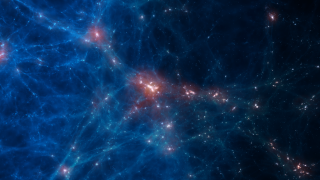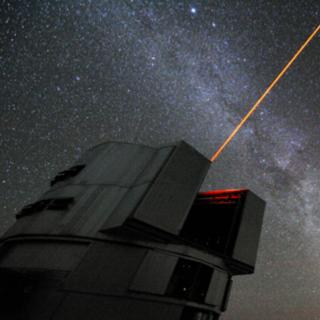Bibcode
Brook, Chris B.; Kawata, Daisuke; Gibson, Brad K.; Gallart, Carme; Vicente, Andrés
Referencia bibliográfica
Monthly Notices of the Royal Astronomical Society
Fecha de publicación:
4
2020
Número de citas
13
Número de citas referidas
12
Descripción
The Milky Way underwent its last significant merger ten billion years ago, when the Gaia-Enceladus-Sausage (GES) was accreted. Accreted GES stars and progenitor stars born prior to the merger make up the bulk of the inner halo. Even though these two main populations of halo stars have similar durations of star formation prior to their merger, they differ in [α/Fe]-[Fe/H] space, with the GES population bending to lower [α/Fe] at a relatively low value of [Fe/H]. We use cosmological simulations of a 'Milky Way' to argue that the different tracks of the halo stars through the [α/Fe]-[Fe/H] plane are due to a difference in their star formation history and efficiency, with the lower mass GES having its low and constant star formation regulated by feedback whilst the higher mass main progenitor has a higher star formation rate prior to the merger. The lower star formation efficiency of GES leads to lower gas pollution levels, pushing [α/Fe]-[Fe/H] tracks to the left. In addition, the increasing star formation rate maintains a higher relative contribution of Type II SNe to Type Ia SNe for the main progenitor population that formed during the same time period, thus maintaining a relatively high [α/Fe]. Thus the different positions of the downturns in the [α/Fe]-[Fe/H] plane for the GES stars are not reflective of different star formation durations, but instead reflect different star formation efficiencies.
Proyectos relacionados

Astrofísica Numérica: Formación y Evolución de Galaxias
Entre las cuestiones fundamentales en Astronomía y Astrofísica están la formación y evolución de galaxias. Las escalas de tiempo y tamaño son tan astronómicas que su observación en galaxias individuales es imposible. Solo con el uso de simulaciones numéricas es posible entender la formación de estructuras cósmicas dentro del actual marco
Claudio
Dalla Vecchia

Evolución Galáctica en el Grupo Local
La formación y evolución de galaxias es un problema fundamental en Astrofísica. Su estudio requiere “viajar atrás en el tiempo”, para lo cual hay dos enfoques complementarios. El mas extendido consiste en analizar las propiedades de las galaxias a diferentes distancias cosmológicas. Nuestro equipo se concentra en el otro enfoque, denominado
Emma
Fernández Alvar